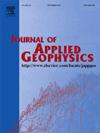频率域三维不规则地震数据重构的压缩感知方法
IF 2.2
3区 地球科学
Q2 GEOSCIENCES, MULTIDISCIPLINARY
引用次数: 0
摘要
在地震勘探中,空间不规则数据的重建是一项关键且具有挑战性的任务,对于后续的速度分析、储层反演和波方程偏移成像等任务至关重要。幸运的是,压缩感知(CS)克服了Nyquist抽样定理的局限性,为插值观测数据提供了经济有效的理论支持,并在各个领域得到了广泛的证明。然而,在地震勘探中,目前基于cs的方法往往难以始终如一地获得满意的重建效果。我们从理论上证明了基于CS的三维重建在空间不规则数据上的不足在于随机采样域和重建域之间的不一致。采样在空间域中是随机进行的,而重建依赖于时空域中的稀疏性,这与CS的原理相冲突,限制了重建的准确性和有效性。为了解决这一问题,我们建议仅在随机采样维度上进行基于cs的重构,以确保两个域之间的一致性。对于三维空间不规则地震数据,随机采样维数对应于空间域,如时间切片或频率切片。针对三维空间不规则数据的空间域二维CS重建,研究了时间片方法的局限性,并通过数值实验验证了频率片方法优于传统的三维时空CS重建方法,具有更高的精度。由于频率片上的复杂特征,统一变换不能捕捉到所有分量的稀疏性,未来的工作将集中在开发更自适应的稀疏变换方法上。本文章由计算机程序翻译,如有差异,请以英文原文为准。
Compressed sensing approach to 3D spatially irregular seismic data reconstruction in frequency-space domain
The reconstruction of spatially irregular data is a critical and challenging task in seismic exploration, essential for subsequent tasks like velocity analysis, reservoir inversion, and wave-equation migration imaging. Fortunately, compressed sensing (CS) overcomes the limitations of the Nyquist sampling theorem, providing cost-effective theoretical support for interpolating observed data, and has been widely proven effective in various fields. However, in seismic exploration, the current CS-based methods often struggle to consistently achieve satisfactory reconstruction. We theoretically demonstrate that the deficiency of 3D reconstruction based on CS for spatially irregular data arises from the inconsistency between the random sampling domain and the reconstruction domain. Sampling is randomly performed in the spatial domain, while reconstruction relies on the sparsity in the spatiotemporal domain, conflicting with the principles of CS and limits the accuracy and effectiveness of the reconstruction. To address this, we propose that CS-based reconstruction should be performed solely in the random sampling dimension, ensuring consistency between the two domains. For 3D spatially irregular seismic data, the random sampling dimension corresponds to the spatial domain, such as in time or frequency slices. For 2D CS-based reconstruction in the spatial domain of 3D spatially irregular data, we identify the limitations of the time-slices method, and numerical experiments demonstrate that the frequency-slices method outperforms traditional 3D spatiotemporal CS reconstruction with higher accuracy. Due to the complex characteristics on the frequency slices, a unitive transform cannot capture the sparsity of all components, future work will focus on developing more adaptive sparse transform methods.
求助全文
通过发布文献求助,成功后即可免费获取论文全文。
去求助
来源期刊

Journal of Applied Geophysics
地学-地球科学综合
CiteScore
3.60
自引率
10.00%
发文量
274
审稿时长
4 months
期刊介绍:
The Journal of Applied Geophysics with its key objective of responding to pertinent and timely needs, places particular emphasis on methodological developments and innovative applications of geophysical techniques for addressing environmental, engineering, and hydrological problems. Related topical research in exploration geophysics and in soil and rock physics is also covered by the Journal of Applied Geophysics.
 求助内容:
求助内容: 应助结果提醒方式:
应助结果提醒方式:


